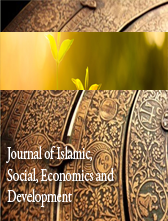HIGHER EDUCATION SUBSIDY IN MALAYSIA: THE BENEFIT INCIDENCE ANALYSIS
Abstract
Funding for higher education continues to dominate the policy discussion particularly the debates on public versus private contribution that best finance higher education. In meeting the objective of widening access to higher education it is argued that higher education should be provided for ‘free’ out of tax-payers money. However, with the escalating higher education costs and immense growth in tertiary enrolment, the possibility for government to offer free education is rather challenging and as far as widening access is called for, equity issue is of equal importance. The data also shows that in many countries, the subsidy for higher education has been ‘regressive’ due to higher percentage of students belonging to the richest quintile enrolled in the higher education and therefore widening the income gap between the rich and the poor. Since Malaysian government continues to heavily subsidise the public higher education institutions, it is interesting to examine which segment of the society benefits ‘progressively’ or ‘regressively’ from the policy in considering the relevant of having a ‘free’ education system. Using the data obtained from the Household Expenditure Survey (2009/2010), the paper employed the Benefit Incidence Analysis (BIA) to measure the distribution of the higher education subsidy. The result shows that the students from the lowest income quintile received 22.5% of the total subsidy, while students who belong to the highest income quintile received nearly 20% of the total subsidy. The findings suggest that the Malaysian education system that promotes equitable access to higher education through various initiatives is translated into a less ‘progressive’ outcome of education subsidy, but still with no attentiveness towards ‘free education’ realization (due to quite high benefits received by the richest quintile).













